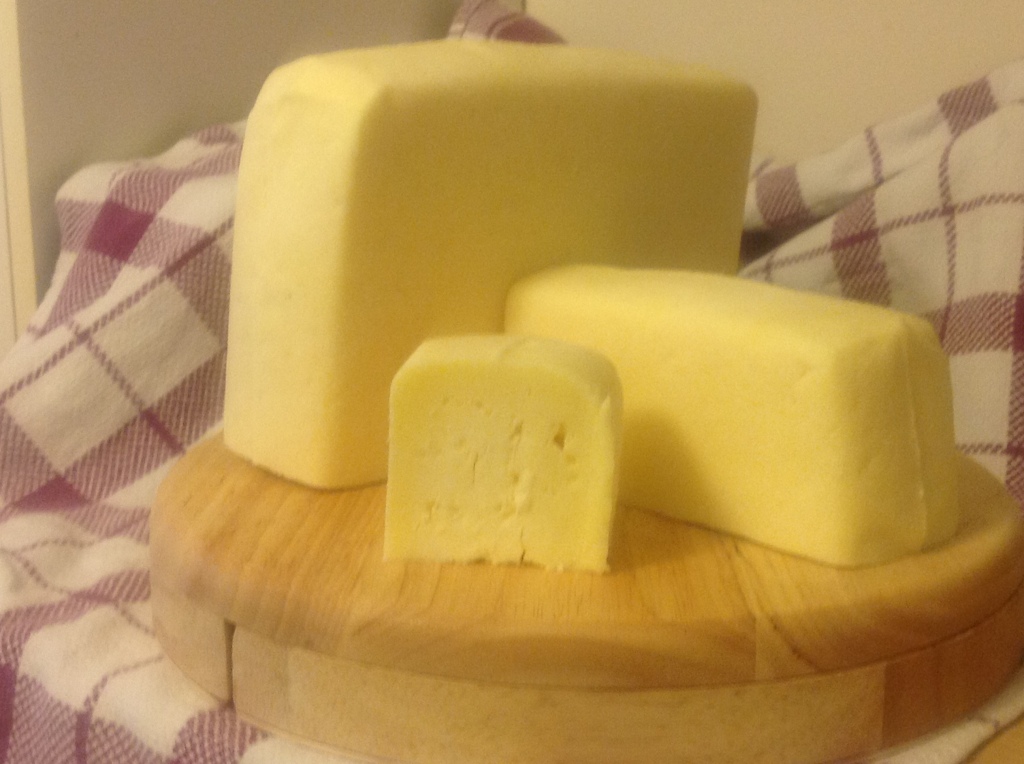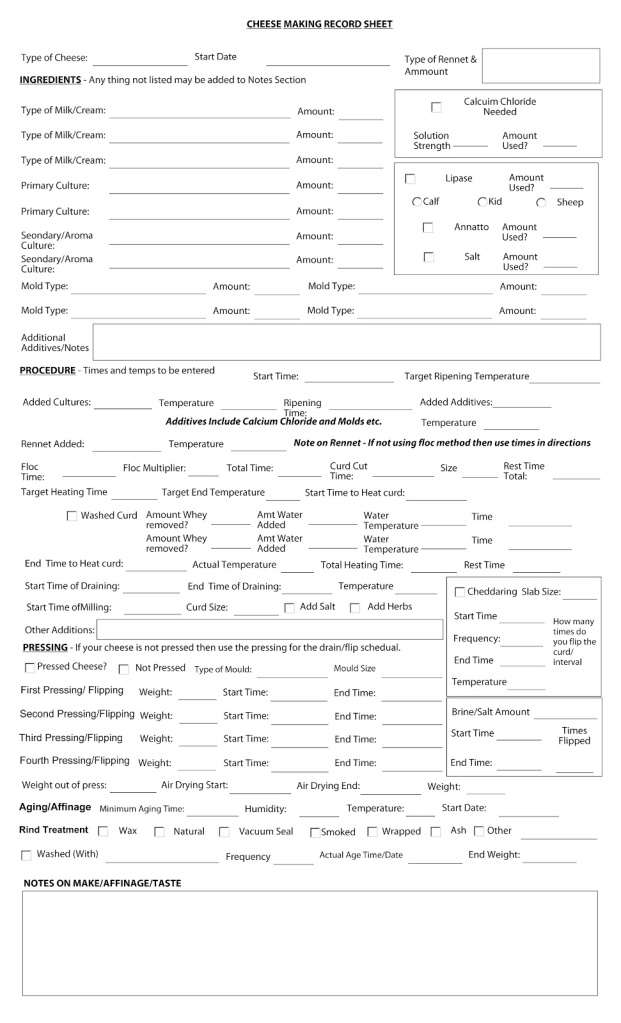After much consideration, I have decided to shutdown Much To Do About Cheese. I just don’t have the time or energy to devote to this page as I would like. It has been a fun 10ish years, but it is time to move on.
I would like to thank everyone who has supported this site over the years, I greatly appreciate it. What will I be doing? I have my career as a cheesemaker and I have been trying to write a cheesemaking book for years. Maybe I might actually finish it.
Take care, go and make some cheese
Ian
Author: ihtreuer
Do you like that rind? Want to have it on your cheese?
Have you ever come across a cheese that you like that has rind that was colorful/flavourful, and you think I want to make that cheese or hey that rind would be awesome on this cheese. Well you can, by creating something called a morge. This is a mixture of bacteria that help produce the flavours/smells that help ripen your cheese. You can purchase these in a pre-made morge like PLA or Brevibacteriun linens (B. linens), or you can make your own morge, like I am doing for my next batch of Special Project Cheeses.
Disclaimer Time: Many of these rinds on commercial cheeses may contain a proprietary blend of bacteria, this post is intended for the HOME CHEESES MAKER, you should not do this with anything you are selling or could enter in competitions. Do so at your own risk.
Continue reading Do you like that rind? Want to have it on your cheese?
Cheese School on Craftsy.com – I’m going back to school…at home
One of the books I use the most is “Artisan Cheese Making At Home” by Mary Karlin. I like her book and it’s companion website. They both have some tips and good directions on how to make cheese. I highly recommend her book. Now Mary Karlin has teamed up with Caftsy.com to offer an online course in making Mozzarella, Chevre and Cheddar. I have had some success with Cheddar, but Mozzarella and Chevre I have not been able to crack. I am hoping to get a better handle on these cheeses.
The nice thing about this course is that there is no time limit. I can go back to the videos at any time. I will keep an update on how I progress. Knowledge is power.
60 Day Havarti
After the Irish Dane Debacle, I had high hopes for my Havarti that was ageing quietly in the cave, kind of like the quiet sibling next to the brash noisy twins ripping up the furniture. It was 60 Days and I decided that it was time to see if I had three pounds of Heavenly Havarti or was it destined for the bin like the brash twins.
I always like to try my cheese right after the first cut. This can give me some indication about the flavour. Right away I could feel the creamy texture of the paste, then there was some firmness in the centre of the cheese. I then cut my piece to bring up to room temperature, snapped some picture and then divided the rest into portions and vacuum sealed them. The have all been marked with who they are going to and back into the cave.
Scotch Washed Rind -Special Project Cheese
On Friday night I was looking for something to do, and when that happens I start to tinker with things that really should be left alone. This time was the exception to that. I had planned on leaving the Scotch Washed Rind Cheese, aka Special Project Cheese, until next week, but I thought other wise. I pulled it out of the cave and this is what it looked like at 25 days.
Keeping the Record Straight Part II
I posted earlier about the sheet that I use when I make my cheese. I used it again last month and noticed an error, so I updated it. It still does not have spaces for pH, but they can be put in the notes section.
You do need Acrobat Reader for the form, and if you want to use it on an iPad, then you should get the “PDF Forms” app from the app store. It was worth it.
Here it is if you would like to use it. If you have suggestions please let me know.
Les Fromages sont Morts – The Cheese are Dead
I know I have not posted anything for a little bit, it has been busy at my house with non-cheese related items. I know what could be more important than cheese, my wife tells me there are other things but she…..is not a cheese fan….I know!
I wanted to talk about the cheeses in the cave right now and how they are progressing.
Continue reading Les Fromages sont Morts – The Cheese are Dead
Cheese Cave Spelunking!
Before I start I want to let you know these are my opinions and you could take them with a grain of cheese salt or not. If you have suggestions then please post in the comments because Knowledge is Power! Now let’s do some Cheese Cave Spelunking!
I am often asked where I store all the cheese that I make, in my “cave“is the usual answer. After they are done with the funny looks, they ask me what I mean. In some places there are cheese makers that still use caves to age their cheese. By caves I mean actual caves. In the Roquefort region of France, Roquefort Cheese (the supposed mother of all Blue Cheeses) is still aged in caves in the surrounding mountain sides, as is some Gorgonzola and Taleggio in Italy. The reason is twofold, first they have a specific temperature that is perfect for ripening cheese year round and secondly they have the right humidity for ripening cheese (anywhere from 80 to 95% RH). These locations have a micro climate that help to develop the specific moulds and flavors that give us the specific taste, smell and texture of these cheeses. As a Home Cheese Maker we do realize that we cannot truly duplicate these conditions in our homes, but we can try to get it close. You need to try to duplicate a temperature and humidity level, which is easier said than done.
My Special Project Cheese at 9 days
On the 16th of April I made two cheeses, a Cheddar for my son, and my “Special Project” or Experiment Cheese. It is this cheese I want to post about. Normally I try to stick to the semi-firm or hard cheeses, I have been moving towards semi-soft/trappist style with my Irish Danes, I think this one should be along the lines of those. I took 1/4 of the curd from the Cheddar (before cooking the curd, just after cutting) and let it drain under its own weight, flipping it every so often. After a few hours I took it out of the hoop to dry and drain some more, I think I rushed taking it out of the hoop as it is now the size of a large fish cake. I was hoping for something the size of a Camembert. Well we learn from our mistakes.
Irish Danes – Day 29
Some times people will try or sample their cheeses during the ageing process to see how the flavour is developing, or to see if they need more time. Normally they would use a Cheese Iron, also known as a Trier, to take a “core sample” so to speak. I unfortunately do not have one…yet. I figured that the cheeses were circles, I could take one of then and cut a section out of the centre and then use my handy-dandy food-saver to vacuum seal the two halves together (I did it once before with a Caerphilly). I picked the one that I was keeping for myself and proceeded to make the cuts. The cheese surgery went well and I am sure the patient will survive.



